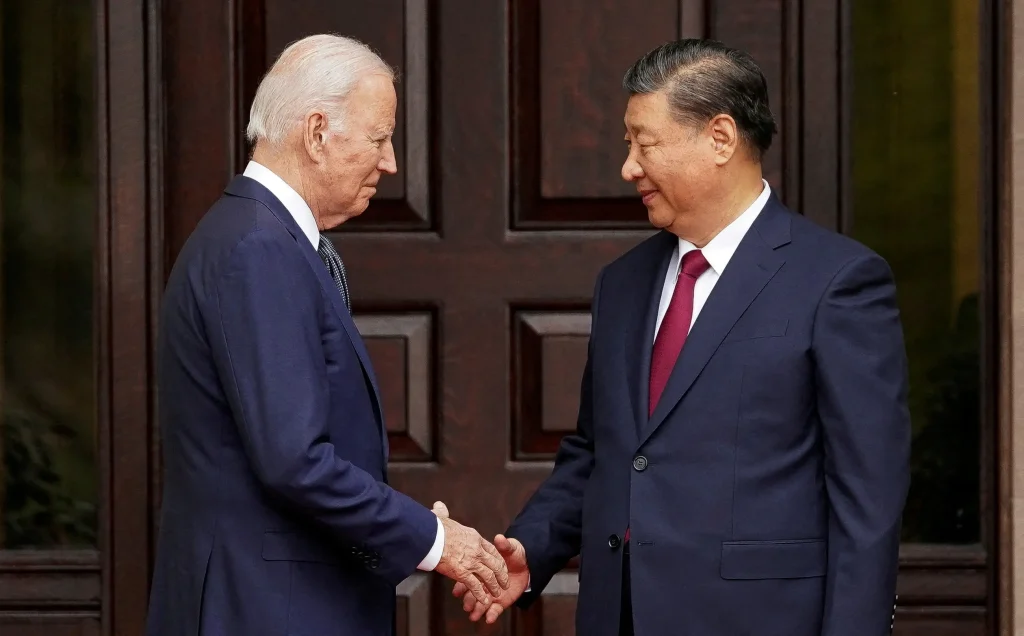Despite the positive atmospherics of the November 2023 summit in California between Presidents Joe
Biden and Xi Jinping, it remains unclear whether any momentum has been generated toward a
substantial relaxation of bilateral tensions over the coming year.
Although the summit produced agreement on several tactical bilateral issues, the fundamental sources of friction and mistrust between the two sides were not substantially addressed. As a result, the relationship is not well-insulated against unforeseen events like the Chinese spy balloon episode of February 2023—which derailed the supposed positive momentum of Biden and Xi’s previous summit (in Bali in November 2022). Given the multiple sources of volatility in the relationship, a similar dynamic is likely in 2024.
Previous fault lines reappeared within weeks of the California summit. In an early December 2023 phone conversation between US Secretary of State Antony Blinken and Chinese Foreign Minister Wang Yi, Blinken reaffirmed the ‘importance of building upon the progress’ made at the meeting. Wang highlighted the need to ‘deliver on the consensus reached by the two heads of state’.” But there was little clarity on the substance of that consensus.
Meanwhile, also in early December 2023, United States Secretary of Commerce Gina Raimondo declared at a conference that ‘China is not our friend’ and is instead ‘the biggest threat we’ve ever had’. This essentially reverted to pre-summit Biden administration rhetoric that focused on the competitive challenge Beijing poses instead of the opportunities for cooperation it presents.
Domestic politics in both countries are also likely to hinder any relaxation of bilateral tensions. Xi’s domination of decision-making in a strongly nationalist China is not conducive to Beijing’s acquiescence to Washington’s preferred terms of engagement. And Biden’s vulnerability to being labelled ‘soft’ on China, as he pursues re-election, makes it unlikely that he will advocate any substantial accommodation to Beijing’s terms.
A new report by the United States House Select Committee on China that outlines a ‘strategy to fundamentally reset the United States’ economic and technological competition’ with China underscores the domestic pressure that Biden will be under to take a hard line with Beijing.
Beyond the domestic political drivers of US–China tensions, structural and historical forces have been fuelling the strategic rivalry between the two countries and the adversarial pathology of their interactions. China’s efforts to capitalise on its ‘rise’ and the United States’ attempts to resist or deny its relative decline have reinforced presumptions of an existential, zero-sum contest between two competing ideological systems.
These conditions have undermined confidence in the possibility of peaceful coexistence. Both sides have inflated their threat perceptions of each other while expanding their definitions of ‘national security’ to justify policies aimed at minimising economic and technological interdependence. Paradoxically, both Beijing and Washington appear to calculate that they have the upper hand — perhaps because they both overestimate their leverage and underestimate that of the other.
This dynamic is leading both sides to adopt antagonistic and retributive policies toward each other, which contradicts their professed desire for detente and undermines the success and sustainability of diplomatic efforts to advance it. Both sides also accuse the other of being insincere in the pursuit of constructive engagement. This is probably in part an attempt to shift the blame for not wanting to assume the domestic political risks of advocating compromise or accommodation.
Given these underlying strategic trends, it is difficult to see how Beijing and Washington will ‘build upon the progress’ of the California summit and ‘deliver on the consensus’ reached there — especially when the meeting produced limited progress and not much of a consensus.
Instead, US–China tensions will likely persist, if not worsen, in 2024 as the two sides double down on their strategic competition and their efforts to score points against each other globally while insulating themselves against vulnerability to each other. Beijing and Washington will probably continue to blame each other for the current state of affairs and both will be sufficiently correct in attributing responsibility to justify resisting any major changes to their own behaviour.
Two issues that are leading candidates for a US–China crisis in 2024 are Taiwan and the South China Sea. There was no substantive progress on the Taiwan issue at the California summit, beyond an exchange of predictable and mutually incriminating talking points. Regardless of the outcome of Taiwan’s presidential election on 13 January 2024, Beijing will try to hold Washington accountable for Taipei’s resistance to elements of the ‘one China’ framework.
At the same time, China has been increasing its coercive pressure on the Philippines over competing claims in the South China Sea and Washington has affirmed that its defence pact with Manila is applicable in the disputed area. Avoiding an escalation of tensions or conflict in either case will be a major challenge.
Further deterioration in US–China relations could be forestalled if Washington and Beijing acknowledged the need for reciprocal accommodation, devoted as much energy and attention to the need for cooperation as they do to competition and embraced more accurate assessments of each other’s strategic intentions and relative leverage. But as the new year rolls in, mutual distrust continues to obstruct mutual understanding.
Paul Heer is Non-Resident Senior Fellow at the Chicago Council on Global Affairs. He served as the US National Intelligence Officer for East Asia from 2007 to 2015. He is the author of Mr. X and the Pacific: George F. Kennan and American Policy in East Asia.
This article is part of an EAF special feature series on 2023 in review and the year ahead.

